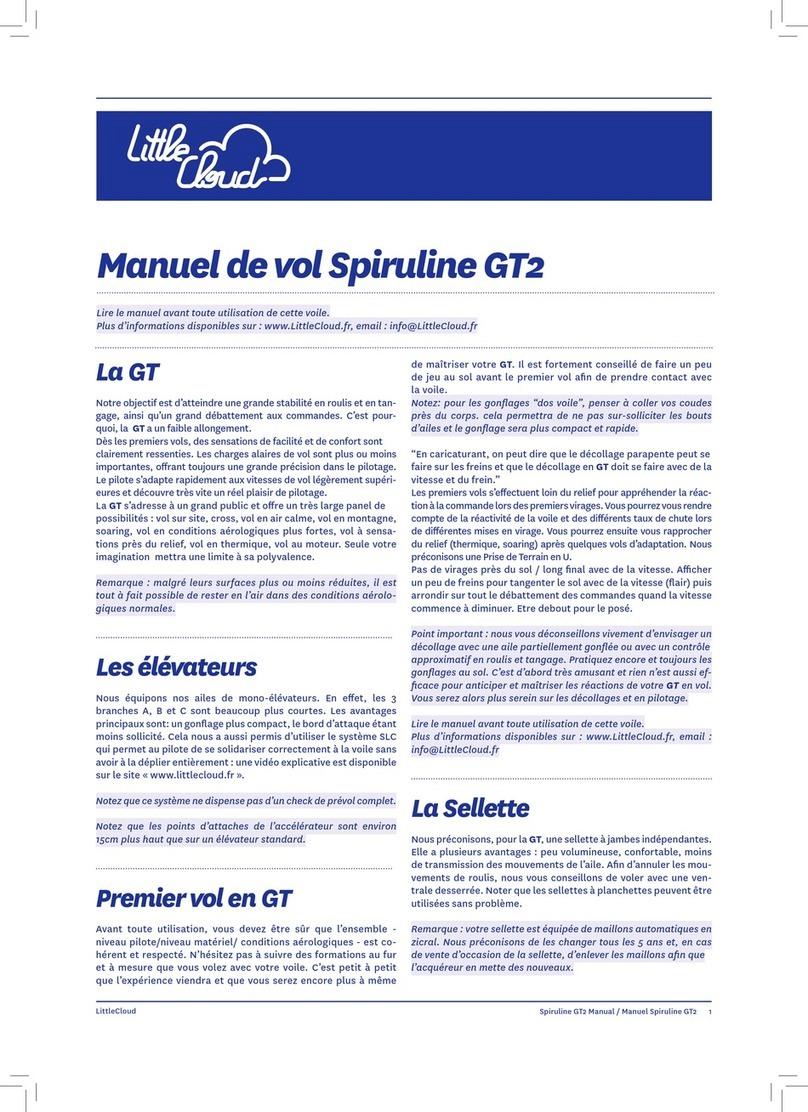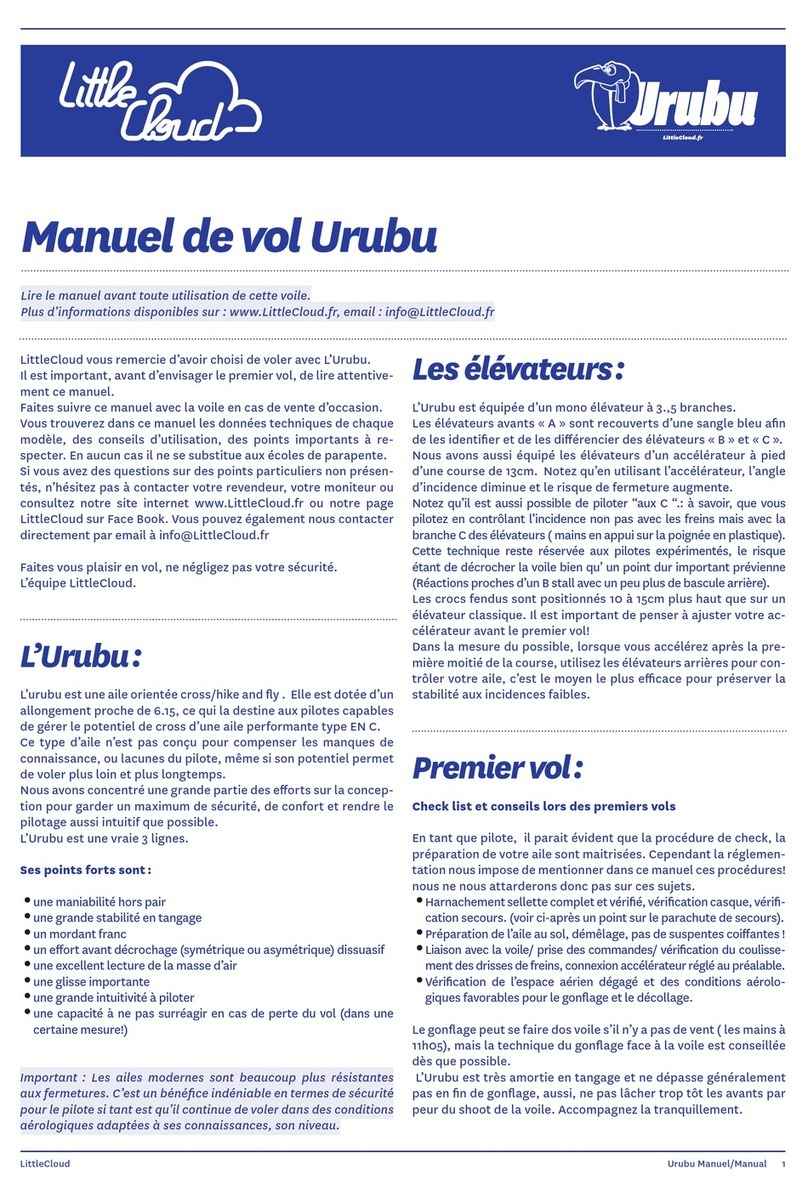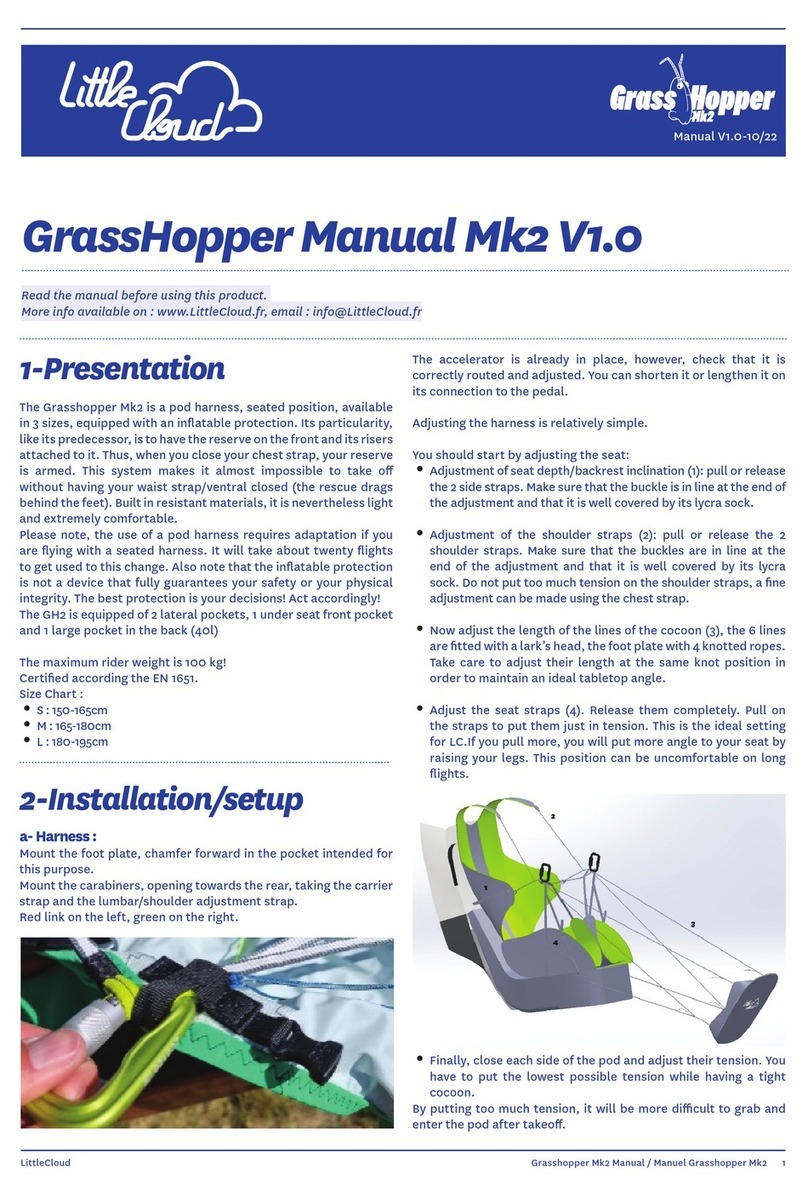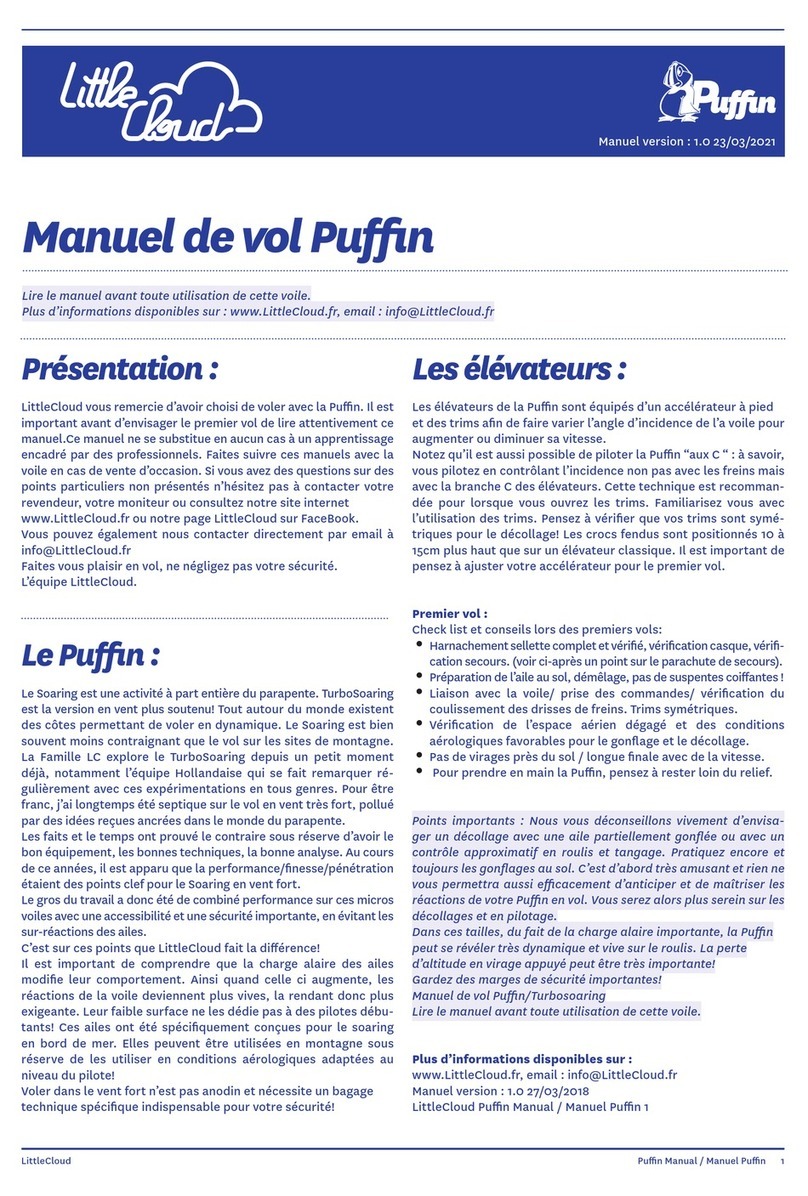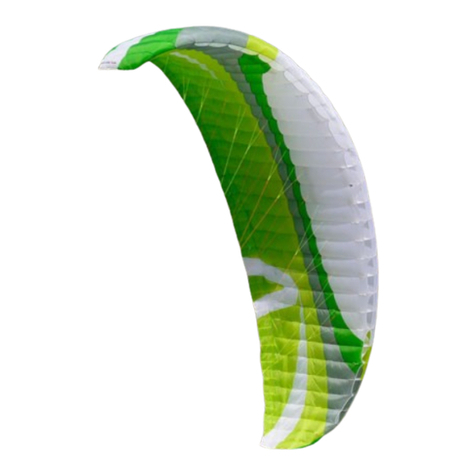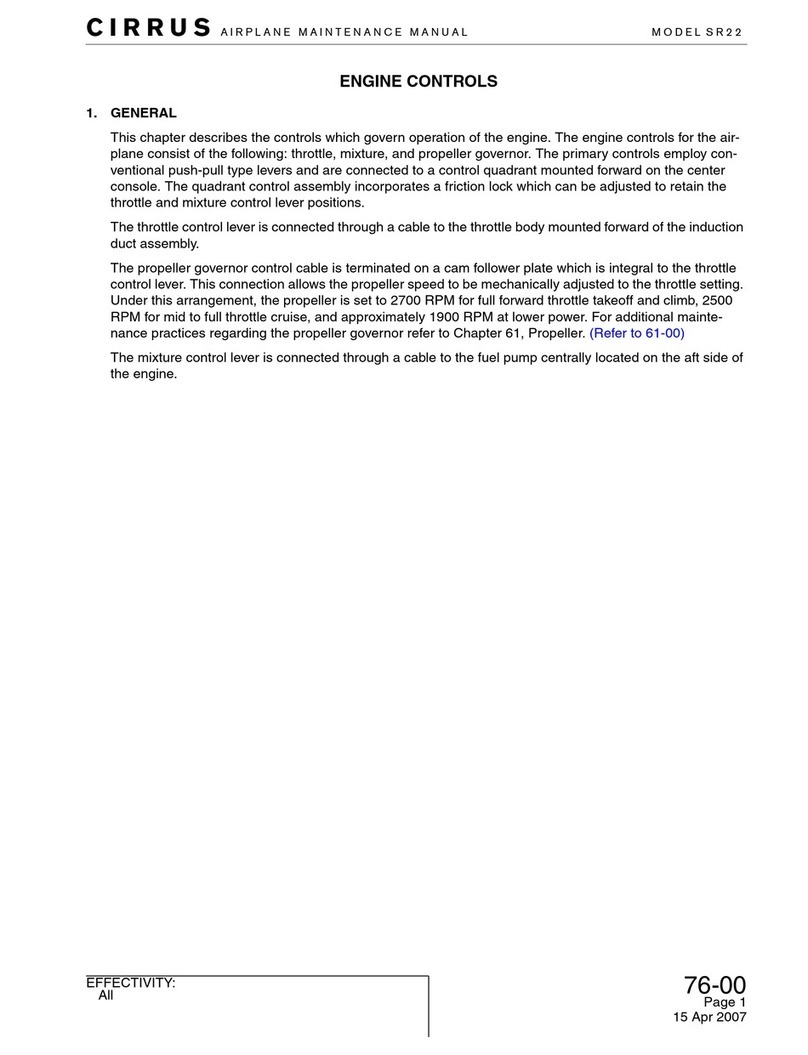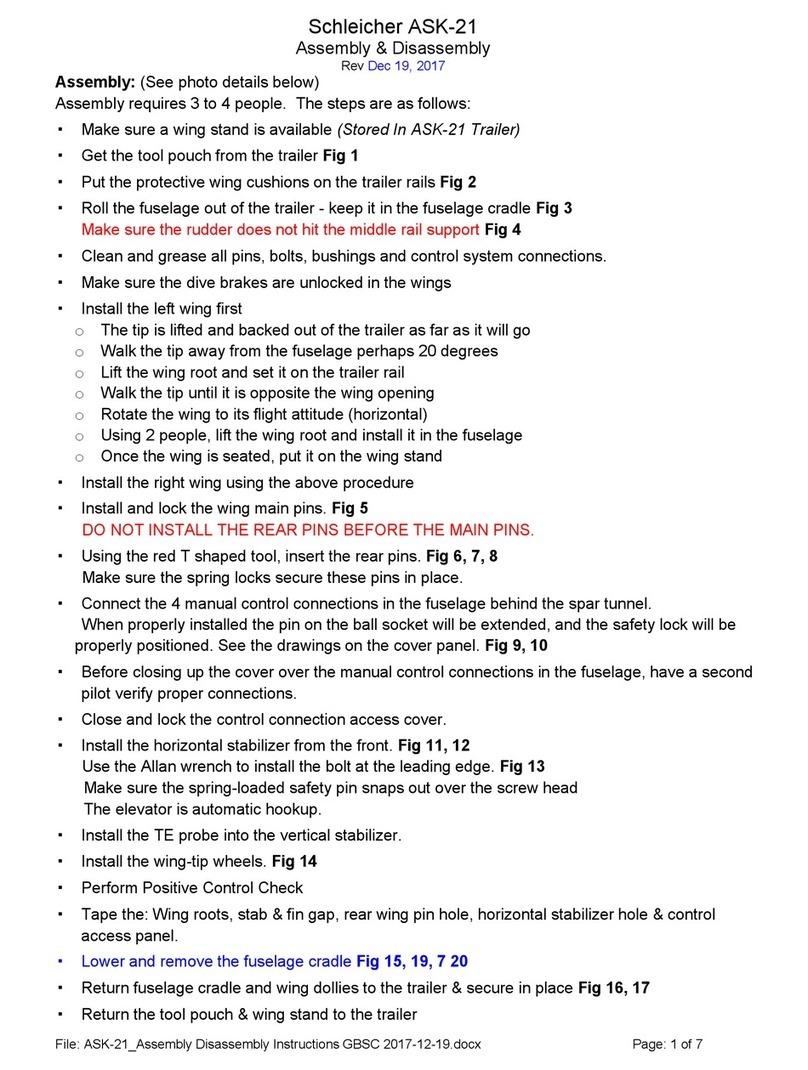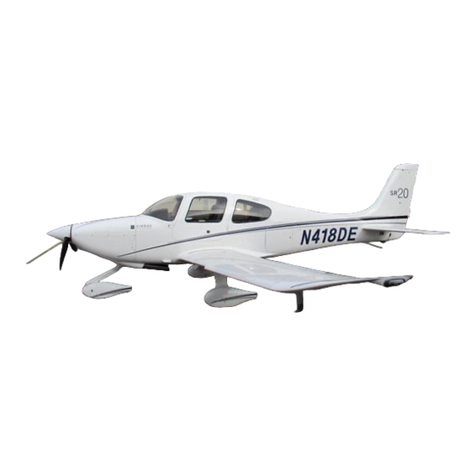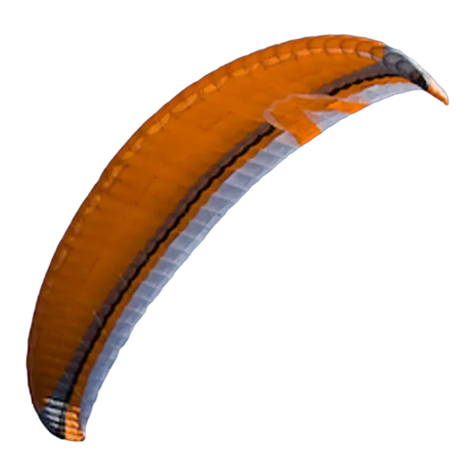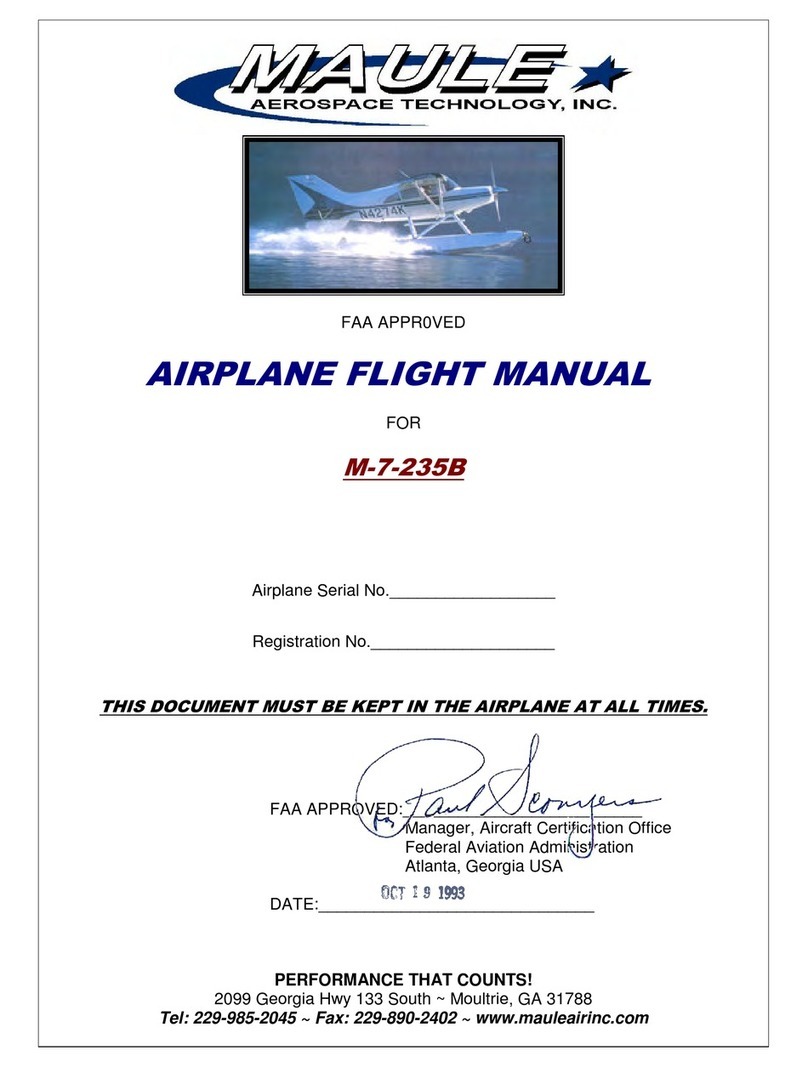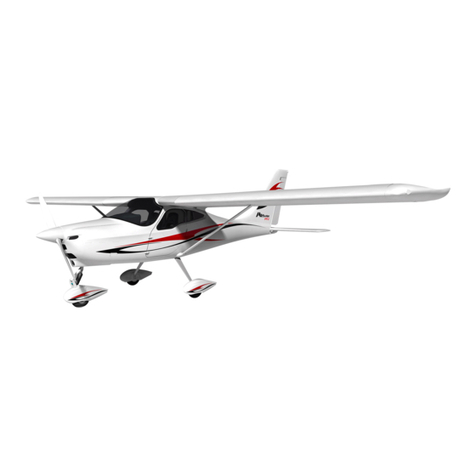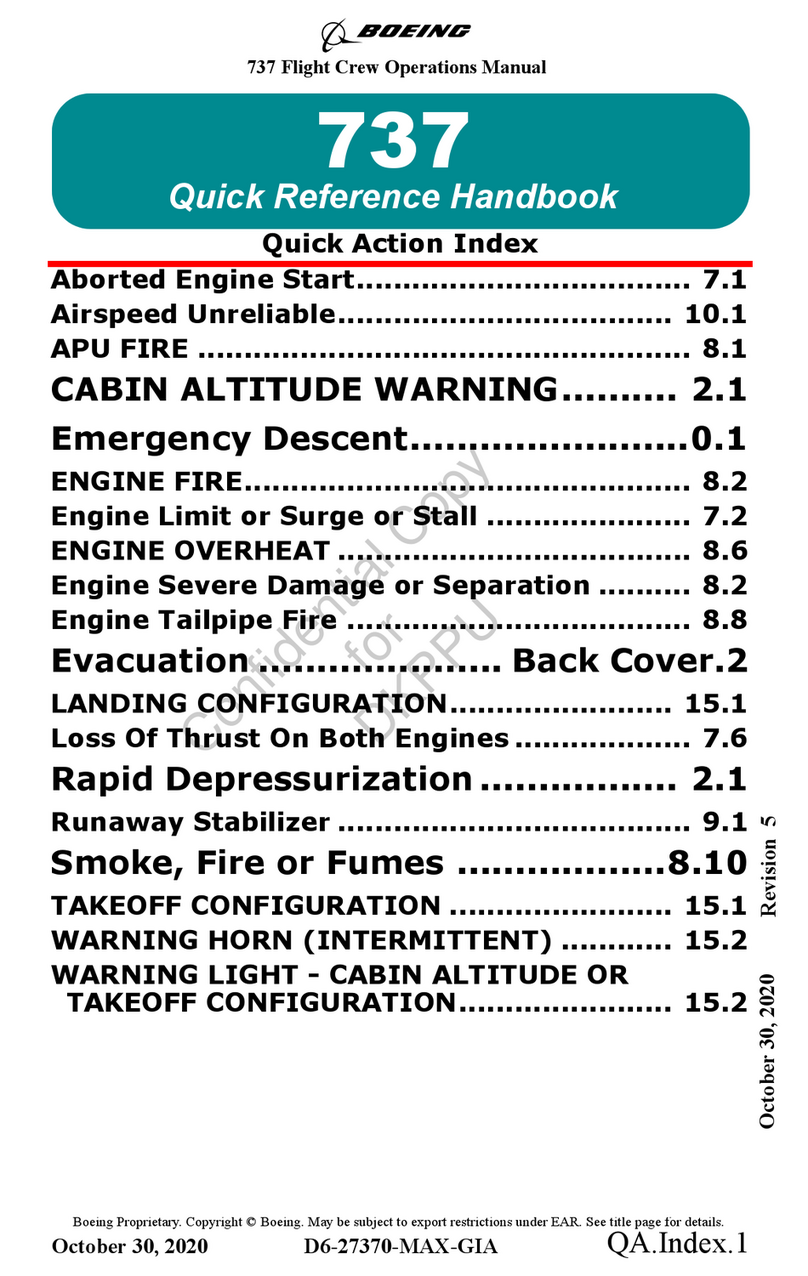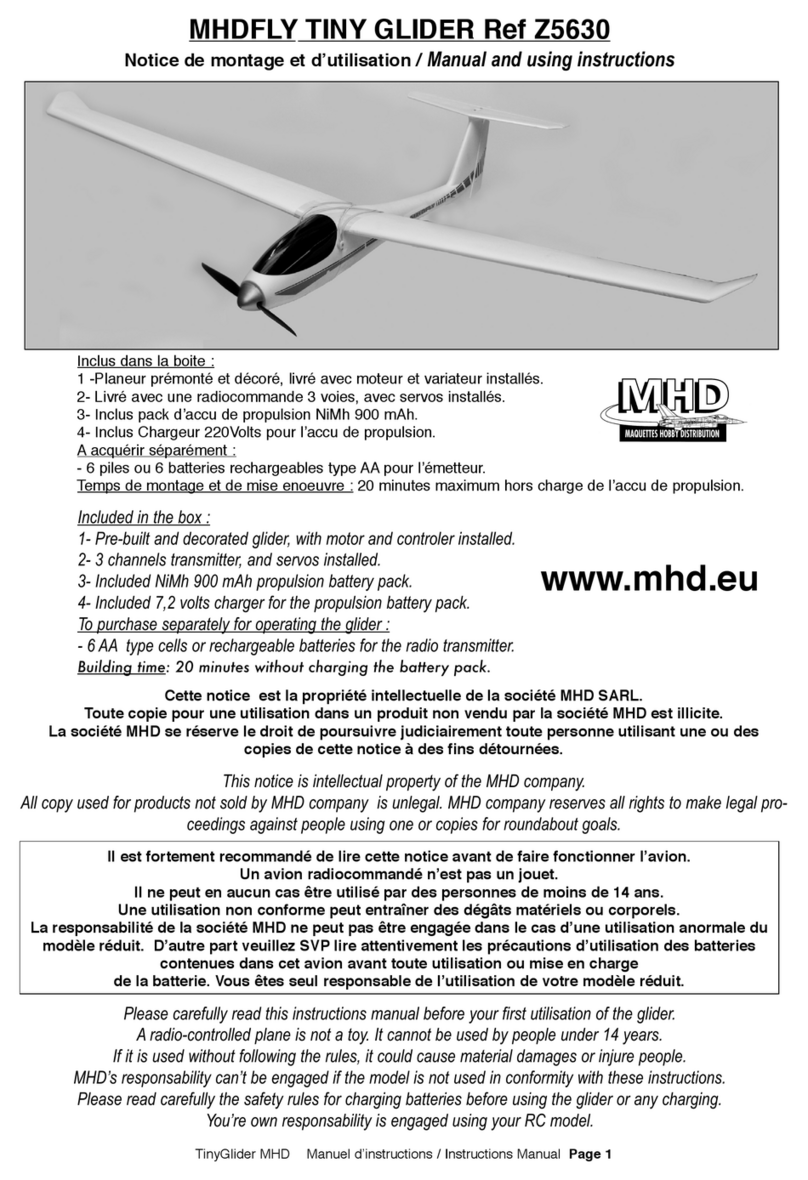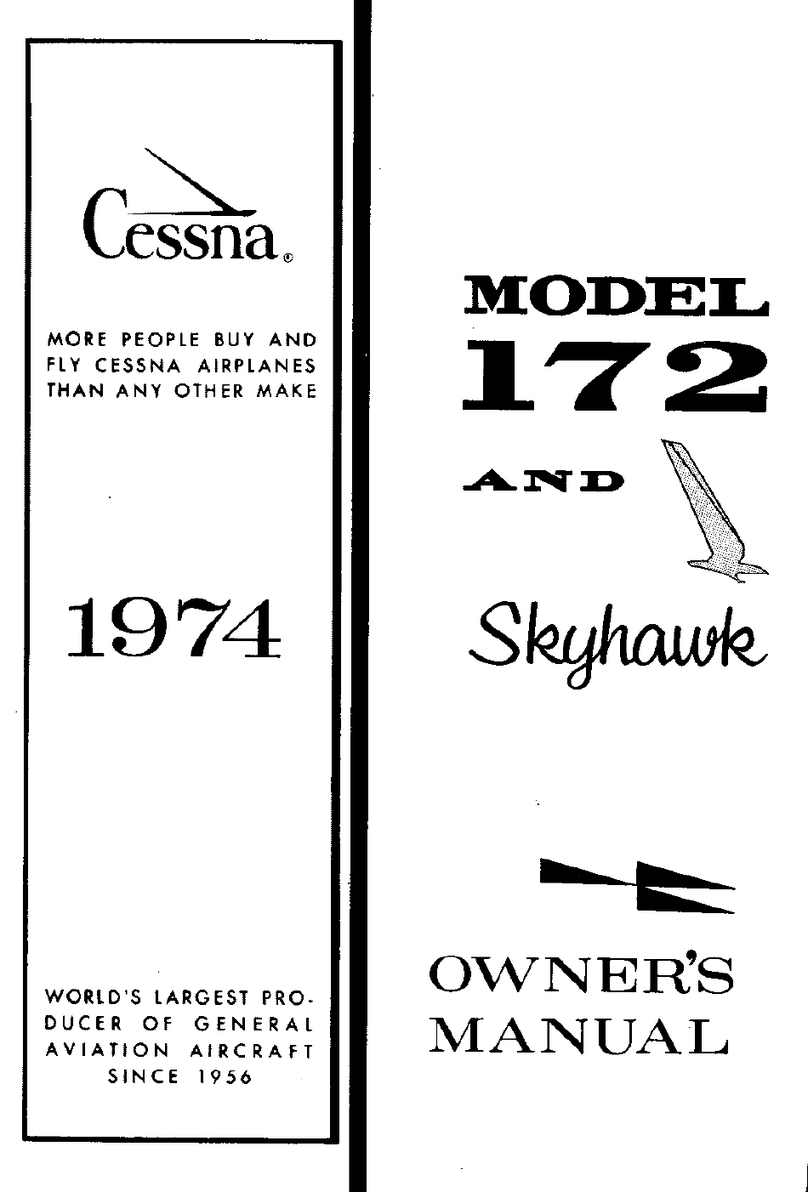Flights in strong and windy conditions:
No pilot, no glider is protected against a collapse. However
an active piloting will prevent and eliminate all chances of
collapses. In turbulent conditions, be more active and an
learn to anticipate the movements of your wing. Always be
aware of your height and avoid over-piloting.
We strongly suggest to keep your brake handles in your
hands and don’t fly in conditions too strong for your flying
skills. To avoid unwanted collapses in rough conditions, it
is essential to opt for an active piloting. All good pilots use
the information that the glider sends trough the brakes.
They constantly adjust and control the pitch movement of
the canopy to fly in harmony with the air movement. The
elements of an active piloting is the pitch control and the
tension in the brake lines. If the glider wants to pass you
use the brakes to slow it and stop this movement. As well if
the glider jibs, raise your hands to regain speed. Flying with
30% of brake pulled down allows you to feel all the infor-
mation transmitted by the wing. In turbulence the internal
pressure of the wing can change and you feel it trough the
brakes. The goal is to always maintain the same pressure
with the brakes. If you feel a sudden loss of pressure, pull
the brake down rapidly until you reach the same pressure
and then raise your hand back up.
These movements can be symmetrical or asymmetrical, you
must be able to rapidly react on one brake or both brakes
at the same time.
It is not necessary to always fly with lots of brake,beware of
the stall point by staying alert regarding the relative wind.
Flying at untrimmed speed diminishes the bank angle ma-
king the leading more fragile to collapses, in strong condi-
tions stay alert when flying with fully released trims.
GOING DOWN FAST !
We consider that fast descent maneuvers are emergency
maneuvers that must be learned and mastered and that
you should always be aware of the evolution of the weather
conditions so you won’t have to use them.
The Ginseng when trims fully released offers a good way to
advance and sink faster. If ever this is not enough, a succes-
sion of wing overs is also a good way to increase even more
your sink rate keeping good horizontal speed. Finally, the
spiral dive allows you to rapidly obtain an important des-
cent rate.
LittleCloud warns you that spiral dives can disorient the
pilot. In this configuration the pilot should always be able
to evaluate his position from the ridge. To get out of a spi-
ral dive the pilot has to raise his hand up and if its not fast
enough he must brake on the opposite side quickly and
strongly or go for a dynamic symmetrical braking then rai-
sing back both hands.
Flight incidents :
The Ginseng are particularly collapse resistant speed
wings.
This is due to a small cells number , the choice of the aero-
foil, short aspect ratio and heavy wing loads.
However the brake travel is shorter than on a regular leisure
paraglider.
More so, speed wings are not made to fly very slowly, so the
pilot will have to stay alert at low speeds
( soaring, top landing and thermaling ).
The behavior of the Ginseng out of flight domain is sound
and simple to understand. But it stays vivid and can be
6.Brake lines free between the handles and the pulleys on the
« C » risers.
7.Proper positioning according to the wind direction.
8.Good visibility and a clear way to take off.
9.At the end of the inflation do not apply too much brake pres-
sure, you’re better off starting by accelerating the run, the
braking will come later when proper speed will be obtained. If
you need to re-center you just have to run faster and the wing
will get back straight over your head.
We can say that taking off with a paraglider can be made being
on the brakes but taking off with a speed wing has to be done
with speed.
The first flights will be made away from the ridge to compre-
hend the brake reaction when making your first turns. You can
realize the reactivity of the wing and different sink rates when
initiating turns. Weight shifting is not necessary when initia-
ting turns. You can then fly closer to the ridge, (thermal, soa-
ring) after a few adaptation flights.
The Ginseng flies faster than a 25sqm paraglider , you can
slow down if you wish by using 30% of brake travel ( best sink
rate and glide ratio ). The precision handling will rapidly allow
you to fly comfortably and using these faster speeds near the
ridge.
10.We recommend a “U” type approach better adapted with
speed wings.
11.No turns near the ground / long final with speed.
12.Use a bit of brakes to flair the ground with speed then flair
completely using all the brake travel when beginning to slow
down. Stand-up when landing.
Important point :
DO NOT take off with a badly inflated wing or roughly control-
led roll and pitch wise or with a knot in a line.(bad check-list)
Practice your ground handling again and again. It’s fun to do
and it will get you to know better the reactions of your glider.
You will gain confidence thus better handling while flying
and no take off will scare you at any spot in the world!!!
THE HARNESS
We recommend separate legs harnesses to fly with a Ginseng.
They have many advantages : small volume, comfortable, less
transmission of the wing movements. To eliminate roll move-
ment we suggest flying with a fully loosened waist strap.
LittleCloud makes two compatible harnesses for the Ginseng :
A reversible into bag harness with inflatable back protection,
2.4kg.
Important point :
Our harnesses are not equipped with an integrated reserve
pocket. The reserve is in frontal position and clipped on the
same carabeeners as the risers.
ADVANCED FLYING
The Ginseng offer us great usable speed potential and are solid
in turbulent conditions therefore bringing us more flying time.
Important :
The great accessibility of the Ginseng does not transform a
beginner pilot into an expert. Just like the great speed po-
tential of our gliders does not transform tubulences and
strong winds into calm air.
6
LittleCloud Ginseng Manual / Manuel Ginseng
